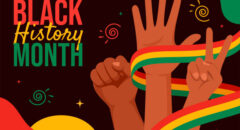
African Diaspora style is omnipresent in today’s fashion, impacting individuals of all colors, ethnicities, and creeds. It’s on full display on Main Street, in shops, online, and on runways. Its rising star power is largely due to a conglomeration of causes, including millennials of African descent needing knowledge and pride in their heritage and the convenience and accessibility of online resources.
Over The Past 20 Years…
Black American artists have emerged as a creative force that has helped shape the modern era. For the first time since the 1970s, there has been such a wide-ranging, deep, and diversified convergence of Black history, politics, and art. There was a clear merging of styles on the comedic “Chappelle’s Show” and the two albums D’Angelo put out fourteen years apart. Barack Obama’s administration is evident in “Black Panther,” Beyoncé’s work on “Black Lives Matter,” and Kendrick Lamar’s work on the nation’s jail issue. You can sense that convergence haunting the fiction of Jesmyn Ward.
The Black community served as a source of inspiration for early performers of all races, and the artists, in turn, influenced and improved upon the Black community’s style reciprocally. Black Americans will recognize several instances of Black style in Beyoncé’s magnificent Lemonade video-opera. Goddess braids, Afros, and New Orleans Creole style are just a few styles she promotes via her influential films and live performances.
Black artists of all stripes flew past the Oval Office for eight years, shaping portrayals of Black Americans via transcendental, trenchant, and genuine thought. The whole nation may now see itself differently because of their changes.
The strong Black Lives Matter movement against racial injustice and the flourishing Afrocentric fashion of today go hand in hand. Some intriguing things transpired when brave NFL player Colin Kaepernick took a symbolic stance against police brutality by kneeling during the national anthem before one of his games. He styled his Afro-textured, curly-kinky hair. Kaepernick often had a low-cut or braided hairstyle before that incident. While fashion may be just aesthetic, it also has the power to reflect deeper societal, cultural, and economic issues.
We Have Always Made An Impact
From the very beginning, Black people have had a central position in American popular culture. This is mostly because white people positioned them there via acts of interest, mocking, and mimicry. Since then, Black artists have fought for cultural autonomy, a platform to showcase their uniqueness in all its complexities, variety, inventiveness, and quirks, and a way for people of color to critique, celebrate, and promote one another.
Black fashion is as prolific as an amoeba in its ability to reproduce and branch out into new subgenres, thus cementing its place in our popular culture.
Bandleaders such as Cab Calloway popularized the wildly baggy zoot suit in the early 1900s in the United States and certain regions of Europe. Billie Holiday’s appearance with a flower in her hair was only one example of how jazzmen and blueswomen set trends. After Black youths promoted the Charleston, an explosive new dance, on Broadway, the need for a style that allowed for dynamic movement allegedly gave birth to the flapper style of the 1920s. The corsets were discarded, and the dresses were let loose and allowed to sway and shimmy until they exposed scandalously the ankles and calves.
This is a part of our new series – “Hidden Black History,” where we highlight uncommon facts throughout Black history. Join us every day during Black History Month for interesting facts about Black people and places you likely haven’t heard before!









